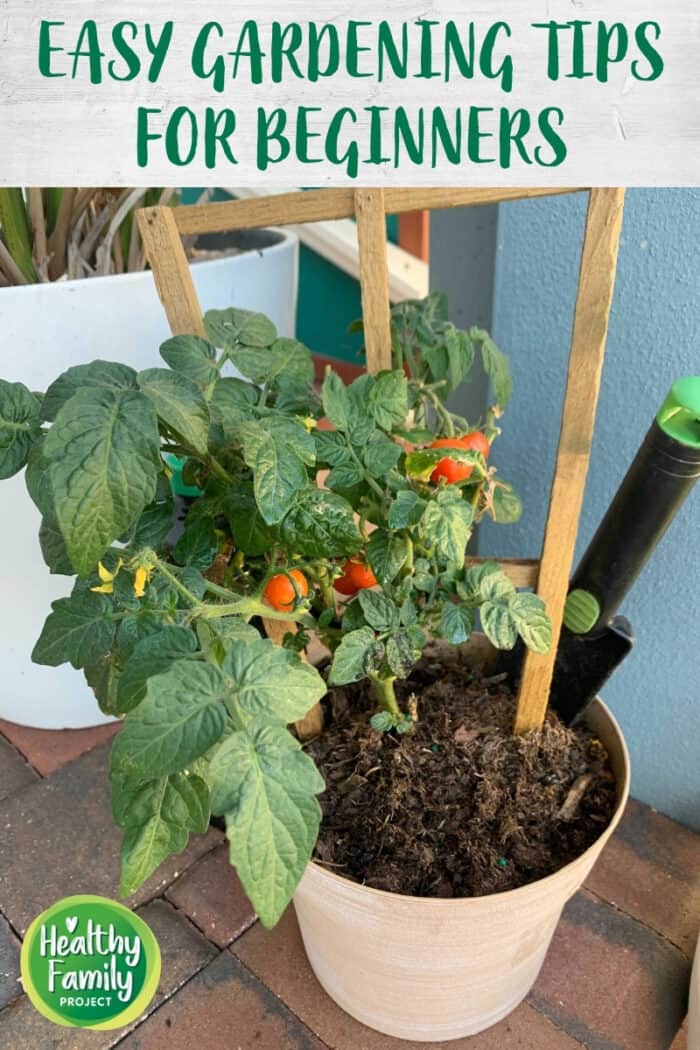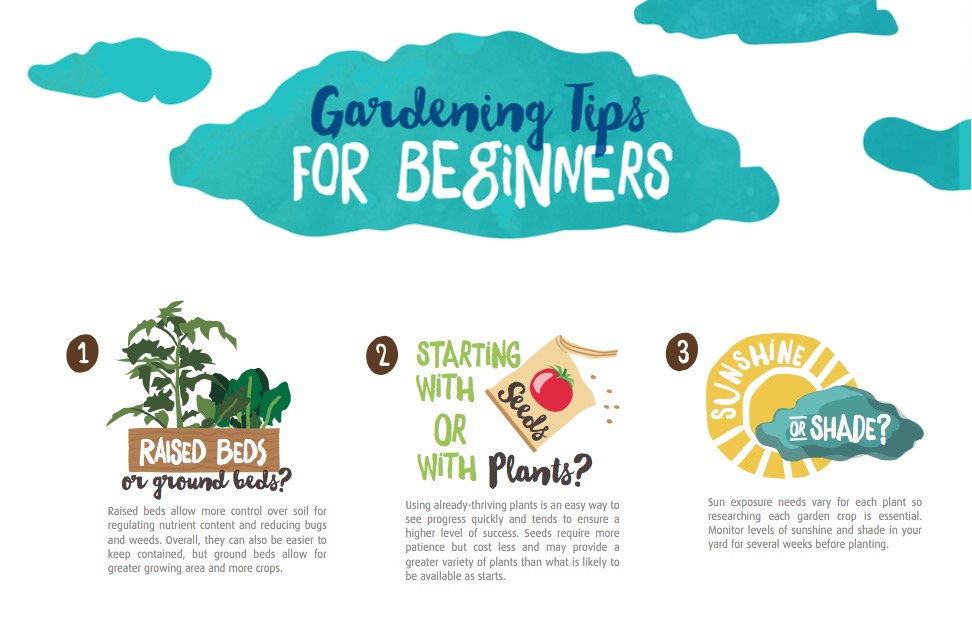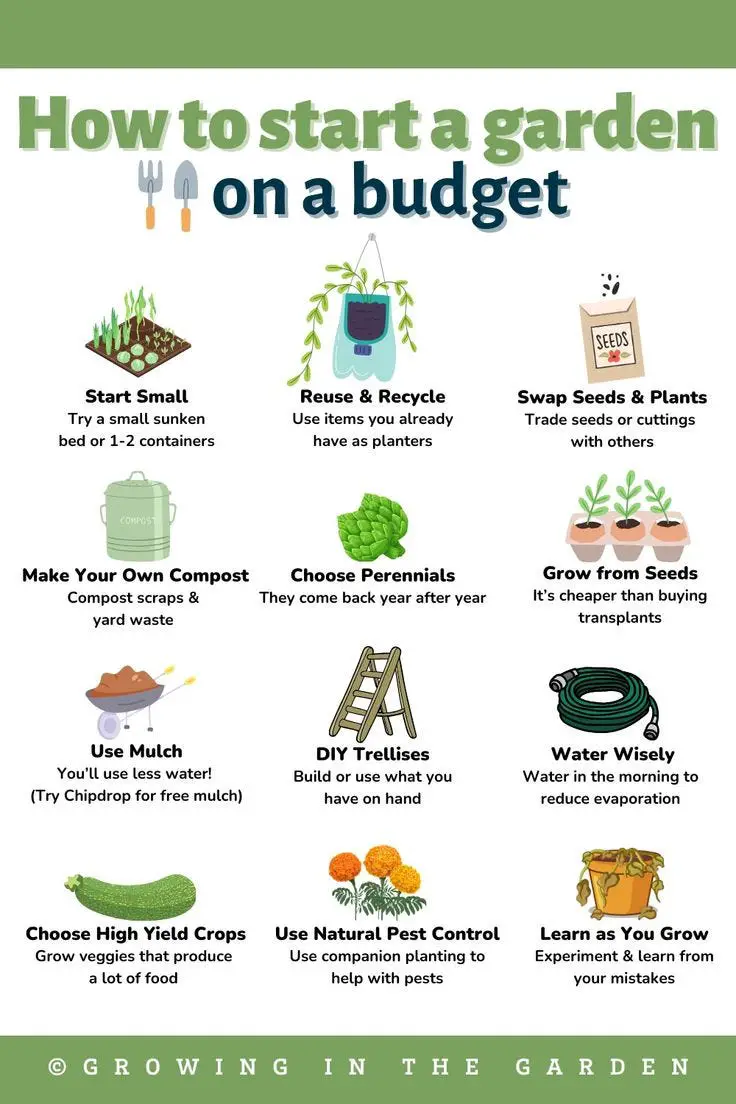Gardening can be a rewarding and relaxing hobby. It’s also a great way to connect with nature.
Starting a garden might seem overwhelming at first. But with the right tips, even beginners can grow a beautiful and productive garden. Whether you have a small balcony or a big backyard, there are essential steps to take. You will learn about choosing the right plants, preparing the soil, and watering correctly.
Plus, gardening offers many benefits for your mental and physical health. Ready to get your hands dirty? Let’s dive into some helpful gardening tips for beginners.

Credit: healthyfamilyproject.com
Choosing The Right Plants
Selecting the right plants is crucial for successful gardening. Choose plants suited to your region’s climate and soil. Research their needs for light, water, and care.
Know Your Climate
Plants grow best in climates they like. Some plants love hot places. Others prefer cool areas. Check your local climate zone. This helps you choose plants that will thrive. Knowing the climate saves time and money. Always pick plants that match your area.
Consider Sunlight And Shade
Plants need different amounts of light. Some need full sun all day. Others grow better in the shade. Observe your garden. See which spots get sunlight. Note the shady areas too. Choose plants that suit these spots. This helps them grow healthy and strong.
Preparing The Soil
Soil testing is very important for successful gardening. Testing helps you know the nutrients in your soil. It also helps you find out the pH level. You can buy a soil test kit online or from a garden center. Follow the instructions on the kit. Collect soil samples from different spots in your garden. Mix the samples well before testing. Testing will show you what your soil needs. It may need more nutrients or a different pH level.
Adding Organic Matter
Adding organic matter improves soil health. It helps plants grow better. You can use compost, manure, or leaf mold. Spread a layer of organic matter on top of the soil. Mix it in well using a garden fork or tiller. This improves the soil structure. It also adds nutrients. Organic matter helps soil hold water better. It also helps roots get more air. Your plants will thank you!
Planting Techniques
Starting with seeds can be cheaper and offers a wider variety. Seeds need more care and time. Seedlings are young plants ready for the garden. They are easier and faster but cost more. Choose what fits your time and budget.
Plants need room to grow. Crowded plants fight for sunlight, water, and nutrients. Always check the spacing on the seed packet or plant tag. Give each plant enough space. This helps them stay healthy and strong.

Credit: www.youtube.com
Watering Essentials
Proper watering is crucial for new gardeners. Ensure plants receive adequate moisture without overwatering. Use a watering can or hose for even distribution.
Watering Schedule
Water your plants early in the morning. This helps the soil absorb water better. Plants need more water on hot days. Less water on cool days.
Check the soil before watering. If it’s dry, water your plants. If it’s wet, wait a day or two. Overwatering can harm plants. Roots may rot.
Best Practices For Irrigation
Use a watering can for small gardens. A hose works well for larger areas. Ensure the water reaches the roots. Avoid wetting the leaves too much. Wet leaves can cause disease.
Mulch helps keep the soil moist. It also reduces the need for frequent watering. Organic mulch is a good choice. It helps improve soil health.
Fertilizing Your Garden
Choosing the right fertilizer is important for plant growth. Different plants need different nutrients. Organic fertilizers are good for the soil. They release nutrients slowly. Chemical fertilizers work faster. They provide instant nutrients. But they can harm the soil over time. Read the labels carefully. Follow the instructions to avoid over-fertilizing.
There are various ways to apply fertilizer. Broadcasting spreads fertilizer over the soil. Side-dressing places fertilizer beside the plants. Foliar feeding involves spraying liquid fertilizer on leaves. Each method has its benefits. Choose the one that suits your garden. Always water your garden after applying fertilizer. This helps the nutrients reach the roots.
Dealing With Pests
Identifying pests is key in protecting your garden. Aphids are small and green. They suck plant juices. Caterpillars chew leaves and are easy to spot. Slugs leave a slimy trail and eat at night. Whiteflies are tiny, white, and fly when you touch the plant. Recognizing these pests helps in taking quick action.
Use natural methods to control pests. Plant marigolds to repel insects. Ladybugs eat aphids. Encourage them in your garden. Neem oil is a safe option. It disrupts pest growth. Soap water spray can kill soft-bodied pests. These methods help keep your garden chemical-free and healthy.
Pruning And Maintenance
Prune plants to keep them healthy. Most plants need pruning in late winter. Some plants should be pruned after they bloom. Check your plant type. Pruning helps remove dead or old growth. It encourages new growth. Always use clean and sharp tools. Make cuts at an angle. This prevents water from sitting on the cut. Avoid pruning in late fall.
| Tool | Use |
|---|---|
| Pruners | Cut small branches and stems |
| Gloves | Protect your hands |
| Spade | Dig soil and plant |
| Watering Can | Water plants |
| Rake | Gather leaves and debris |
Harvesting Your Crops
Look for color changes in fruits and vegetables. For example, tomatoes turn red or orange. Check size; many crops reach a specific size when ripe. Touch the produce; ripe fruits feel firm but not hard. Smell can also help; ripe fruits often have a sweet scent. For leafy greens, bright and crisp leaves indicate readiness. Beans and peas should be full and plump inside the pod.
Use clean tools like scissors or knives. Cut fruits and vegetables gently to avoid damage. For root vegetables, use a garden fork to lift them out. Avoid pulling; it can break the plant. Twist and pull for beans and peas. Pick leafy greens by cutting the outer leaves first. Harvest in the morning for best taste and freshness.

Credit: ediblenortheastflorida.ediblecommunities.com
Frequently Asked Questions
What Are The Basic Gardening Tools?
For beginners, basic gardening tools include a trowel, pruners, gloves, watering can, and a garden fork.
How Often Should I Water My Plants?
Water your plants when the soil feels dry. Typically, this is once or twice a week.
What Is The Best Soil For Gardening?
Loamy soil, which is a mix of sand, silt, and clay, is ideal for most plants.
How Do I Start A Garden From Scratch?
Start by choosing a sunny spot, preparing the soil, and selecting suitable plants for your climate.
Conclusion
Starting a garden can be fun and rewarding. With these tips, beginners can grow healthy plants. Start small, choose easy plants, and be patient. Gardening teaches patience and care. Enjoy the process and watch your garden thrive. Happy gardening!

My mission is to help you bring the beauty of nature indoors with expert advice, detailed plant care guides, and creative design ideas.





Leave a Reply